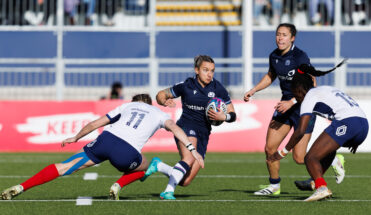Dunlop’s double strike for Scotland
As part of our celebrations of the 150th anniversary of the first international rugby match, we turn back the clock a mere 50 years to one of the most remarkable weeks in the history of Scottish sport.
In the seven days from 20 March 1971, 17 Scottish rugby players wrote their names into history. Not only did they achieve a rare Scotland win at Twickenham – the first in 33 years at the time – but they followed it up in the Centenary Test one week later at Murrayfield with five rip-roaring tries as England were put to the sword again.
Central to the dual successes was a 28-year-old Ayrshire farmer, Quintin Dunlop, whose love for the game is undiminished by the passing years. You could imagine Dunlop being the answer to the top prize question on Who Wants to be a Millionaire? “Name the rugby player who was never on a losing Scotland side, won two caps and beat England twice in the space of one week?”
Pre-lockdown, when guests were checking-in to the Trump Turnberry Hotel in Ayrshire, where Dunlop is a sprightly member of the concierge team, “they would see my name badge and some would say ‘Are you that boy that won twice against England in one week?’!”
In March 1971, Dunlop was rewarded for perseverance and the art of hooking, of which he was something of a master.
“I was about 13st 9lbs at my playing weight and as a player I kind of struggled to put on weight – mind you I’ve made up for it since! I’ve hardly any hair left either though I used to make the excuse that we scrummaged so low that my hair would get rubbed off!”
“But I had quite a high power to weight ratio and all my life I’d never played anywhere else but hooker and, in those days, you were rated on your ability to strike against the head,” he explained.
“You had to pick your moment because you couldn’t strike against the head in every scrum, especially in the hardest games, but it was what I could bring to the table, because of my particular build and ability to move in the front row.”
![[[+name]]](https://d2m3fcf8oort3z.cloudfront.net/assets/galleries/1612264198_948316_1.jpg)
![[[+name]]](https://d2m3fcf8oort3z.cloudfront.net/assets/galleries/1612264198_8383252_1.jpg)
![[[+name]]](https://d2m3fcf8oort3z.cloudfront.net/assets/galleries/1612264473_player_22.jpg)
Pictured above left to right: Chris Rea, Arthur Brown and Peter Brown.
A proud product of Merchiston Castle School, he had captained his club West of Scotland, spent two seasons in the Glasgow District team and was the reserve for Scotland’s internationals against Wales and Ireland earlier that season.
Frank Laidlaw, the experienced Melrose hooker, was the man in possession of the number two shirt but an injury to the Borderer, led to Dunlop making his debut at Twickenham.
“Laidlaw was the incumbent and I was trying like hell to be selected,” Dunlop recalled, “The guy who was also coming up on the ropes with me was Bobby Clark of Edinburgh Wanderers.”
“He and I were serious rivals and in the days of the unofficial championship there was huge competition between West of Scotland and Edinburgh Wanderers as, at the time, we were really the only two major open clubs as many others were for former pupils.”
Dunlop apologises as he recounts how a clash between West and Wanderers the preceding Christmas/New Year was moved onto the international pitch at Murrayfield after a cold snap and was televised on BBC’s Rugby Special.
“It was a seriously good game of rugby and, sorry for my immodesty, I out-hooked Bobby Clark ten or eleven strikes against the head to one or maybe none and the Press started asking why I wasn’t getting a game (for Scotland).”
So, when the Scotland call-up occurred, Dunlop, who played alongside such international regulars as Sandy Carmichael and Gordon Brown at West and had Ian Mighty Mouse McLauchlan for company in the Glasgow District front-row, was ready for the fray.

“As a guy who had been in love with rugby since I was ten years old, it was like Utopia for me to play for Scotland. As a young farmer from Maybole I was living the dream,” he said.
“Before the match, Wilson Shaw, who was the SRU President, whose brilliant tries had helped Scotland to victory there in 1938 (and we hadn’t won there since), told us that we had to rid him of what had become a millstone around his neck and shoulders and break the sequence and get a win.
“We knew too that the Lions selectors were at the game as the tour party to go to New Zealand that summer was to be announced on the Monday and although we hadn’t won a game as yet in that championship there was a big motivation: to win against England at Twickenham and force your way into the Lions,” he said.
Six of the Scotland XV at Twickenham did just that: Chris Rea, Alastair Biggar, McLauchlan, Carmichael, Gordon Brown and Rodger Arneil.
The second vocal encouragement came from London Scottish second row Alastair McHarg and wasn’t quite as lyrical or poetic as Shaw’s earlier entreaties.
“We had always been in the game. It was really quite evenly-contested but going into the last 15-20 minutes England edged further ahead at 15-8 through a Bob Hiller penalty to add to his two earlier penalties and try and a Tony Neary try.
“There was a break in play and McHarg, sensing our frustration that we hadn’t turned pressure into points, offered a few choice words, let’s just say what we needed to do to the opposition, and there was a collective will to respond.”
That Scotland did. Scrum-half Duncan Paterson, following up his own kick-ahead pulled back one try (earlier he had dropped a goal). It was three points for a try then, so Scotland were still trailing 15-11. Ken Bogle, in his book Scottish Rugby: Game by Game takes up the story:
“In the dying seconds, McLauchlan thundered into the English (22) from a short lineout. Paterson made a darting run before finding Peter Brown who gave out a one-handed, overhead pass to Rea.
“The centre juggled with the ball and just managed to make the line. The outcome hinged on Peter Brown’s conversion attempt. From a position about halfway between the posts and the touchline he put the ball straight between the uprights and all of Scotland rejoiced.”
Dunlop’s description was a wee bit different. “Chris Rea scored a good try and PC (Brown), with that head-on kicking style, sclaffed it over the bar!”
Peter Brown, the captain, had played a starring role having converted his own first-half try too.
Dunlop went on: “I don’t remember it being crazy, crazy celebrations afterwards. Lex Govan, the chairman of the selectors, told us on the bus that it would be ‘same again’ for the selection for next week and from a personal perspective I couldn’t believe as an Ayrshire farmer I was sitting there after the match drinking out of the Calcutta Cup.”
One week later, 27 March 1971, the 100th anniversary to the day of the first match, and with Prince Charles and Prime Minister Edward Heath present, Scotland faced England again, this time on home soil for the Centenary Test.
“We had the bit between our teeth the whole game and it was one of our biggest winning margins. Right from the kick-off England tried to attack from deep but big John Frame and Chris Rea were up on the English centres before they could blink, the ball went lose and Frame got the try,” Dunlop said.

Peter Brown, Billy Steele and Rea scored tries and Frame weighed in with a second as Scotland were in dazzling form. Arthur Brown – one of six Gala players in the starting line-up – kicked four conversions and Peter Brown added a penalty.
England’s points came from a drop-goal by their stand-off Dick Cowman and a penalty from Hiller.
Scotland fielded the same starting XV both weekends:
Arthur Brown (Gala); Billy Steele (Bedford), John Frame (Gala), Chris Rea (Headingley), Alastair Biggar (London Scottish), Jock Turner (Gala), Duncan Paterson (Gala); Ian McLauchlan (Jordanhill), Quintin Dunlop (West of Scotland), Sandy Carmichael (West of Scotland), Alastair McHarg (London Scottish), Gordon Brown (West of Scotland), Nairn MacEwan (Gala), Rodger Arneil (Leicester) and Peter Brown (Gala) CAPTAIN.
At Twickenham, Stephen Turk (Langholm) replaced the injured Frame for his first cap; and at Murrayfield, Gordon Strachan (Jordanhill) made his debut off the bench for the injured Gordon Brown.
Dunlop never played for Scotland again but there are no recriminations as he looks back.
“I felt so absolutely proud and privileged to have played for Scotland. Into the next season and West were still top dogs in the old unofficial championship. These were the days of the two trials, Scotland v The Rest, and I played in one when I wasn’t really fully fit having done something to my ribs. I played and Bobby Clark, my rival, got the better of me.”
Clark was to then hold down the hooking berth in the Scotland team until Duncan Madsen of Gosforth and then Colin Fisher of Waterloo emerged in the mid ‘70s.
Dunlop played on in club rugby, returning to Ayr from West of Scotland and the wider lessons he’d learned from the game, how to network and promote, he used in his business life. He moved on from the large arable/cattle/sheep farm in Maybole and started his own free-range eggs business, complete with mobile hen houses and using wind and solar power. Clients included Scotland’s top hotels such as Turnberry and Gleneagles.
When he sold that business, retirement beckoned but the former chef at Turnberry was now managing the hotel and he asked Dunlop if he would like to join the concierge team.
“There I was ten days later, putting on the kilt and the feather and the plaid and getting ready to be paid just for talking to people,” he joked.
Dunlop, like so many in the hospitality industry, is eager to return to work when the pandemic restrictions allow. But in the meantime, there is a tangible pride at his indelible place in Scottish Rugby folklore.

Tags
Related news
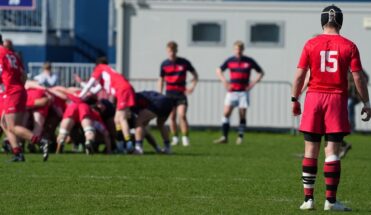
Inter-city double header as Edinburgh Rugby U16 host Glasgow Warriors U16
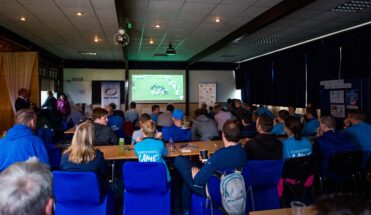
Visit a Scottish Gas Net Zero Roadshow at your local rugby club
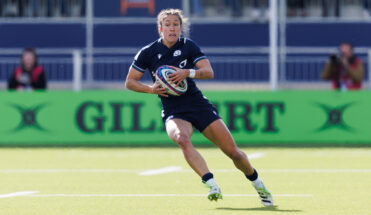
Lloyd set for milestone cap against Azzurri

Review: U17 FOSROC Academy Festival

Super ‘sleuthing’ traces relatives of Scotland cap
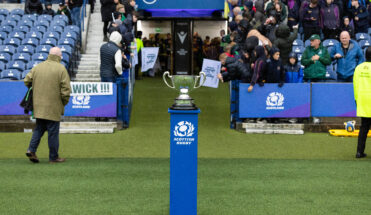
Silver Saturday finalists confirmed – the countdown is on

U17 FOSROC Festival sees regional academy sides joined by Newcastle Falcons
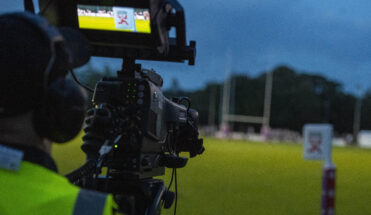
BBC ALBA to broadcast live FOSROC Super Series Sprint matches
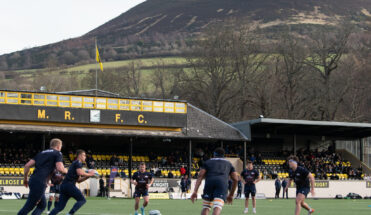
Teams to feature at Melrose Sevens in tribute to Eric Liddell
